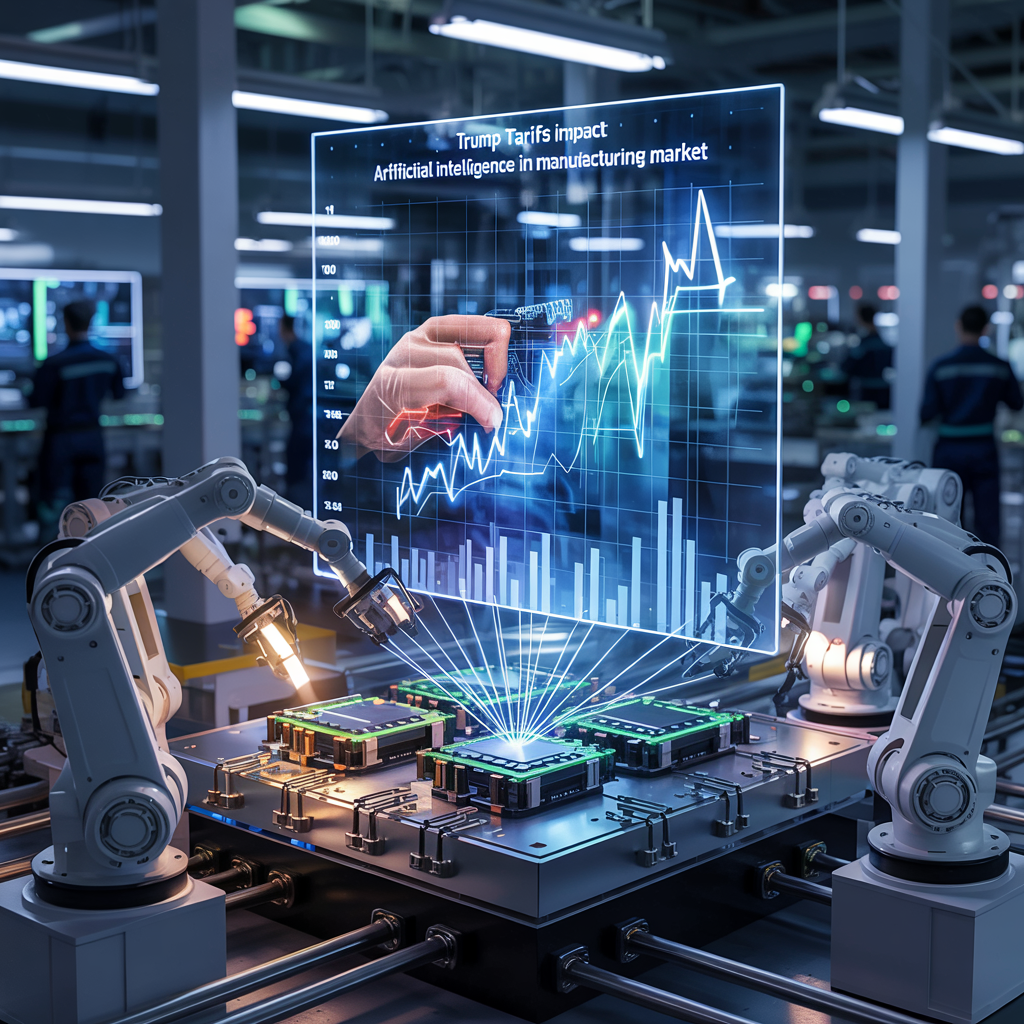The manufacturing sector is undergoing a seismic shift, powered by advancements in Artificial Intelligence (AI). From predictive maintenance and smart robotics to real-time analytics and quality control, AI is transforming factories into intelligent, adaptive systems. However, the path to this AI-driven future hasn’t been without obstacles—particularly those introduced by the Trump-era tariffs on imported goods, especially from China.
While these tariffs disrupted global supply chains and increased costs, they also served as a wake-up call, forcing the U.S. manufacturing industry to rethink sourcing strategies, invest in domestic innovation, and prioritize resilience. Today, in the post-tariff environment, the AI in manufacturing market is not only recovering but evolving—unlocking new opportunities for growth, innovation, and leadership.
Unveil the Effects of Trump Tariffs on Artificial Intelligence in Manufacturing Market Evolution @ https://www.marketsandmarkets.com/pdfdownloadNew.asp?id=72679105
Turning Trade Tensions into Innovation
The Trump administration’s trade policy, particularly the imposition of tariffs on high-tech imports, initially created significant headwinds for manufacturers embracing AI. Critical components like sensors, chips, robotics hardware, and industrial control systems became more expensive and harder to source. Yet, this disruption also spurred a pivot toward domestic R&D and reshoring production capabilities.
As a result, we’re witnessing a renewed emphasis on building AI solutions in the U.S., with stronger collaboration between government, industry, and academia. This shift is laying the foundation for a more resilient and self-sufficient manufacturing ecosystem—one less dependent on volatile global supply chains.
Key Growth Opportunities in the Post-Tariff Era
- Domestic AI Hardware and Semiconductor Innovation
In response to tariff-related import challenges, U.S. companies and government initiatives are investing heavily in semiconductor manufacturing and AI hardware. This will not only reduce dependence on foreign suppliers but also stimulate job creation and technological advancement onshore.
- Edge AI and Smart Automation
Manufacturers are shifting toward edge computing to reduce latency, improve data security, and decrease reliance on high-cost imported data centers or hardware. Edge AI solutions are being deployed in quality inspection, real-time monitoring, and adaptive production lines, helping manufacturers gain a competitive edge.
- AI-as-a-Service (AIaaS)
As capital expenditure remains a concern, especially for small and medium-sized manufacturers, scalable AI-as-a-Service models are becoming attractive. These subscription-based platforms allow companies to deploy AI tools without hefty upfront investment, accelerating adoption across sectors.
- Workforce Upskilling and Human-AI Collaboration
The post-tariff focus on domestic growth is also driving efforts to reskill the workforce. With AI augmenting human roles rather than replacing them, a new wave of tech-savvy manufacturing professionals is emerging—one that understands both machines and data.
Challenges That Still Remain
Despite the progress, the road ahead isn’t without its hurdles:
- High Initial Investment: Even with domestic production ramping up, the cost of deploying AI systems—especially advanced robotics and machine learning infrastructure—remains a barrier for many.
- Cybersecurity Risks: As manufacturing systems become increasingly connected, the risk of cyberattacks grows. Securing AI systems must be a top priority.
- Integration Complexity: Merging AI with legacy systems can be a technical challenge, requiring both time and expertise.
Solutions and Strategic Moves Forward
To fully unlock the future potential of AI in manufacturing post-tariffs, stakeholders can consider the following strategies:
- Incentivize Domestic Innovation: Government incentives, grants, and public-private partnerships can accelerate AI R&D and infrastructure development.
- Promote Open Standards and Interoperability: Standardizing data formats and AI interfaces across machinery and software will simplify integration and accelerate adoption.
- Strengthen AI Education and Training: By investing in education and vocational training, the U.S. can build a strong talent pipeline to support AI-driven manufacturing.
- Leverage Regional Manufacturing Hubs: Developing AI-enabled manufacturing clusters across regions can foster collaboration, reduce costs, and spread economic benefits.
Conclusion: A Smarter, Stronger Manufacturing Future
The Trump tariffs, while disruptive, acted as a catalyst that reshaped the trajectory of AI in the manufacturing market. By exposing vulnerabilities in supply chains and triggering a rethink of sourcing and innovation strategies, the post-tariff landscape is now ripe with opportunity.
As manufacturers embrace edge computing, AI-as-a-Service, domestic hardware production, and smarter workforce strategies, the future of the industry looks more resilient, efficient, and innovative. With the right investments and policies, the U.S. can not only catch up but lead the next chapter of smart manufacturing powered by AI.

